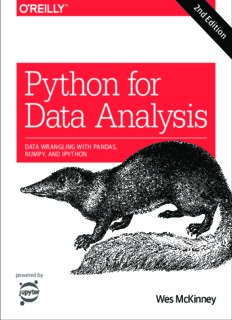
A quarter is a three-month period on a company’s financial calendar that acts as a basis for periodic financial reports and the paying of dividends. A quarter refers to one-fourth of a year and is typically expressed as Q1 for the first quarter, Q2 for the second quarter, and so forth. For example, a quarter is often shown with its relevant year, as in Q1 2022 or Q1’22, which represents the first quarter of the year 2022.
KEY TAKEAWAYS
- A quarter is a three-month period on a company’s financial calendar that acts as a basis for periodic financial reports and the paying of dividends.
- A quarter refers to one-fourth of a year and is typically expressed as Q1 for the first quarter, etc., and can be expressed with the year, such as Q1 2022 (or Q1’22).
- Quarterly reports (known as 10-Q filings with the SEC) and earnings are crucial pieces of information for investors and analysts.
- The IRS also imposes quarterly reporting requirements including quarterly estimated tax payments for certain taxpayers.
- Though beneficial for organizing financial information and comparing it across prior quarterly periods, adversaries of quarters point to the extra reporting cost and burden.
Understanding Quarters
Most financial reporting and dividend payments are done quarterly. Not all companies will have fiscal quarters that correspond to calendar quarters and it is common for a company to close its fourth quarter after its busiest time of year. Dividends are also often paid quarterly although many companies outside the U.S. may not pay dividends evenly.
Companies have two main accounting periods—the fiscal quarter and the fiscal year (FY). The fiscal year for most companies runs from Jan. 1 to Dec. 31 (although it doesn’t have to). The standard calendar quarters that make up the year are as follows:
- January, February, and March (Q1)
- April, May, and June (Q2)
- July, August, and September (Q3)
- October, November, and December (Q4)
Some companies have fiscal years that follow different dates. Costco Wholesale Corporation’s fiscal year begins in September and ends in the following August. Thus, its fiscal fourth-quarter includes June, July, and August.
Fiscal quarters for a company will coincide with their fiscal year (FY), and the fourth fiscal quarter will also conclude on the same date as the fiscal year.
The Seasonality Effect
Companies, investors, and analysts use data from different quarters to make comparisons and evaluate trends. For example, it is common for a company’s quarterly report to be compared to the same quarter of the previous year. Many companies are seasonal which would make a comparison over sequential quarters misleading.
A retail company could earn half its annual profits in the fourth quarter while a construction company does most of its business in the first three quarters. In this situation, comparing the first quarter results for a department store to its performance during the fourth quarter would indicate an alarming drop in sales.
Evaluating a seasonal company during its slow quarters can be enlightening. It is reasonable to assume that if sales and profits are growing in the off-quarters when compared to the same quarter in prior years, the intrinsic strength of the company is also improving.
For example, auto dealers typically have a slow first quarter and rarely conduct incentive sales programs in February and March. Thus, if an auto dealer saw significant improvement in sales in the first quarter, this year compared to last, it may indicate the potential for surprisingly strong sales in the second and third quarters as well.
Uses of Fiscal Quarters
There are several different ways in which companies interact with fiscal quarters. Public companies generally have more reporting requirements than private companies, and specific decisions public companies make (i.e. issuing dividends) revolve around quarters.
Companies aren’t the only ones using quarters for financial reasons. The Internal Revenue Service requires certain taxpayers to make quarterly estimated tax payments using Form 941. This form is used to remit payroll taxes multiple times in a single year.
Quarterly Reports
Quarterly earnings reports are important for publicly traded companies and their investors. Each release has the potential to affect the value of a company’s stock. If a company has a good quarter, its stock value may increase. If the company has a poor quarter the value of its stock could drop dramatically.
All public companies in the U.S. must file quarterly reports, known as Form 10-Q, with the Securities and Exchange Commission (SEC) at the end of their first three fiscal quarters. Each 10-Q includes unaudited financial statements and operations information for the previous three months (quarter).
A publicly-traded company must also file an annual report, known as Form 10-K. The annual report will often include more detailed information than the quarterly reports including an audit statement, presentations, and additional disclosures.
The quarterly earnings report often includes forward-looking “guidance” for what management expects from the next few quarters or through the end of the year. These estimates are used by analysts and investors to develop their expectations for performance over the next few quarters.
The estimates and guidance provided by analysts and management can have a big impact on a stock every three months. If management issues guidance for the next quarter that is worse than expected, the stock’s price will drop. Similarly, if management issues guidance—or an analyst upgrades their independent estimates—the stock can rise significantly.
Quarterly Dividends
In the U.S., most companies that pay a dividend will distribute it more or less evenly over four quarters. In many economies outside the U.S., it is common to split the annual dividend into quarterly payments with one of the payments being much larger than the others. It is also not unusual to find companies outside the U.S. that only pay one dividend per year.
The payment of quarterly dividends can create some volatility in a stock’s price when the ex-date arrives. Some analysts have noticed that investors may rebalance or sell their stock on the ex-date or soon after when the dividend growth rate appears to be slowing or other changes in the market make the dividend less attractive.
Some companies may report using “halves”, or H1 and H2 to divide their year into two parts instead of four. The first half of the year, or H1, always includes the first and second quarter. The second half of the year, or H2, always includes the third and fourth quarter.
Non-Standard Quarters
For a variety of reasons, some public companies will use a non-standard or non-calendar quarterly reporting system. In addition, certain governments use different quarter systems. The first quarter of the U.S. federal government’s fiscal year is October, November, and December. State governments may also have their own fiscal calendars.
Sometimes a company may have a non-standard fiscal year to help with business or tax planning. The Internal Revenue Service (IRS) allows companies to choose a “tax year” that is still 52-53 weeks long but does not end in December.
In 2021, H&R Block (HRB) changed its fiscal year to end on June 30th, from the previous April 30th. Upon announcing this, it stated that the change “allows for better alignment of complete tax seasons in comparable fiscal periods and other related benefits.”
Releasing an annual report, which may be accompanied by shareholder meetings and additional disclosures, after the busiest part of a company’s year helps managers and shareholders make better decisions about the year ahead.
Companies that rely on U.S. government contracts may use September as the end of their fiscal year, and the fourth quarter because that is when they expect new projects to be closed and budget planning from the government to be available. Meanwhile, some companies have very unusual quarterly systems.
Criticism of Quarters
Some have questioned the importance of the quarterly reporting system. The big argument against the setup is that it puts too much pressure on companies and executives to deliver short-term results to please analysts and investors as opposed to focusing on the long-term interests of the business.
The other issue is that companies report their summary annual statements once per year, so the information can become stale and out of date in between the annual reporting cycle. One approach to solve this problem is to use a trailing four quarters or trailing 12 months (TTM) analysis.
By the middle of the fourth quarter of 2021, the annual data for 2021 can be estimated by summarizing the last four quarters. In this case, assume that the company’s third-quarter 2021 results are available. An analyst would manually combine the quarterly data from the first three quarters of 2021 with the last quarter of 2020 to estimate the company’s earnings and revenue trends.
This analysis will overlap some of the data used in the last annual report, but it will still give some insight into how 2021 is likely to look by the end of the year. If the first three quarters of 2021 had been poor compared to the first three-quarters of 2020, the trailing-four-quarter analysis will show that.
Given that there are so many variables that have to be accounted for with each new quarter, using the best accounting software is a great way to help accountants save time and ensure all reporting is accurate.
What Are the 4 Fiscal Quarters?
A fiscal quarter is a three-month period in which a company reports its financial results. As its name suggests, there are four quarterly periods in a year, meaning a publicly-traded company would issue four quarterly reports per year. Companies and investors alike use fiscal quarters to keep track of their financial results and business developments over time. These quarters are often referred to as Q1, Q2, Q3, and Q4.
A company can choose how to divide a calendar year into these four quarters. Companies will often end a quarter at the end of March, June, September, and December. A company can elect to have its fiscal year-end anytime, thereby impacting how its quarters are divided.
Are Quarters Always Lined Up to the Calendar Year?
Quarters do not always line up with the calendar year. For instance, if a company chooses to have its fiscal year starting in February rather than January, then its first quarter would consist of February, March, and April. Companies sometimes choose to do this if they want their fiscal year to end in their own peak season. Alternatively, since finishing the year often involves a lot of additional accounting work, some companies choose to end their fiscal year on a relatively calm month.
What Does Q4 2022 Mean?
There are two components to Q4 2022. The first part (“Q4”) represents the quarter, while the second part (“2022”) represents the year. In this example, the phrase Q4 2022 means the fourth quarter in 2022.
Because this phrase includes both the quarter and the year, this phrase assumes that whatever is being analyzed has a fiscal year that is the same as a calendar year.
What Is the Fiscal Calendar?
A fiscal calendar is an arbitrary range of dates that defines a company’s annual reporting cycle. Instead of simply using a standard calendar year that runs from January to December, a company can decide to use a different calendar cycle for reporting that better aligns with its operations, cyclicality, or seasonality.
For example, a company may elect to have a fiscal year ending in June. Although the calendar year runs from January to December, the company’s year-end income statement will run from July 1 to June 30.
What Are the Dates for Q1, Q2, Q3, and Q4?
If a company decides to have a fiscal year different than a calendar year, the dates for each quarter may be different. However, if a company decides to report financial information on the same dates as a standard calendar cycle, the dates are:
Quarter 1: Jan. 1 through March 30
Quarter 2: April 1 through June 30
Quarter 3: July 1 through Sept. 30
Quarter 4: Oct. 1 through Dec. 31
The Bottom Line
Organizing financial planning and reporting into three-month quarterly units enables companies and those that analyze and govern them to track progress, set requirements, and make useful comparisons. Some critics feel undue focus on quarters promotes short-term thinking and planning and can make some information out of date. But generally, organizing information this way—and quarters don’t have to follow the traditional calendar—increases the ability to organize information and recognize potential problems early.







